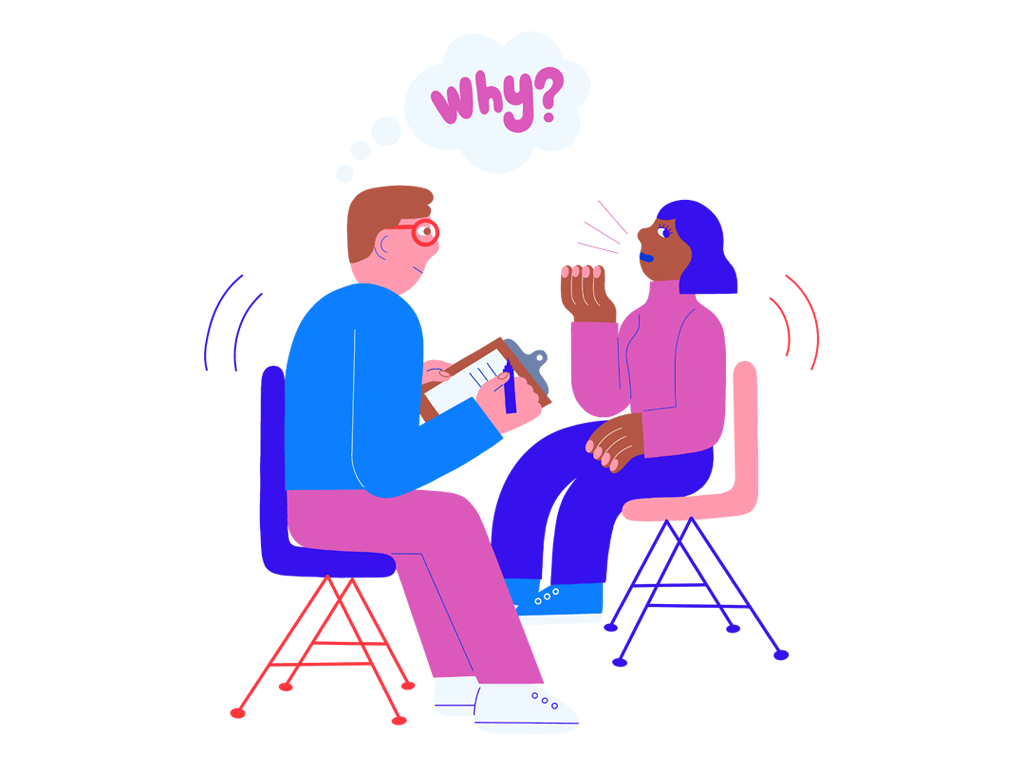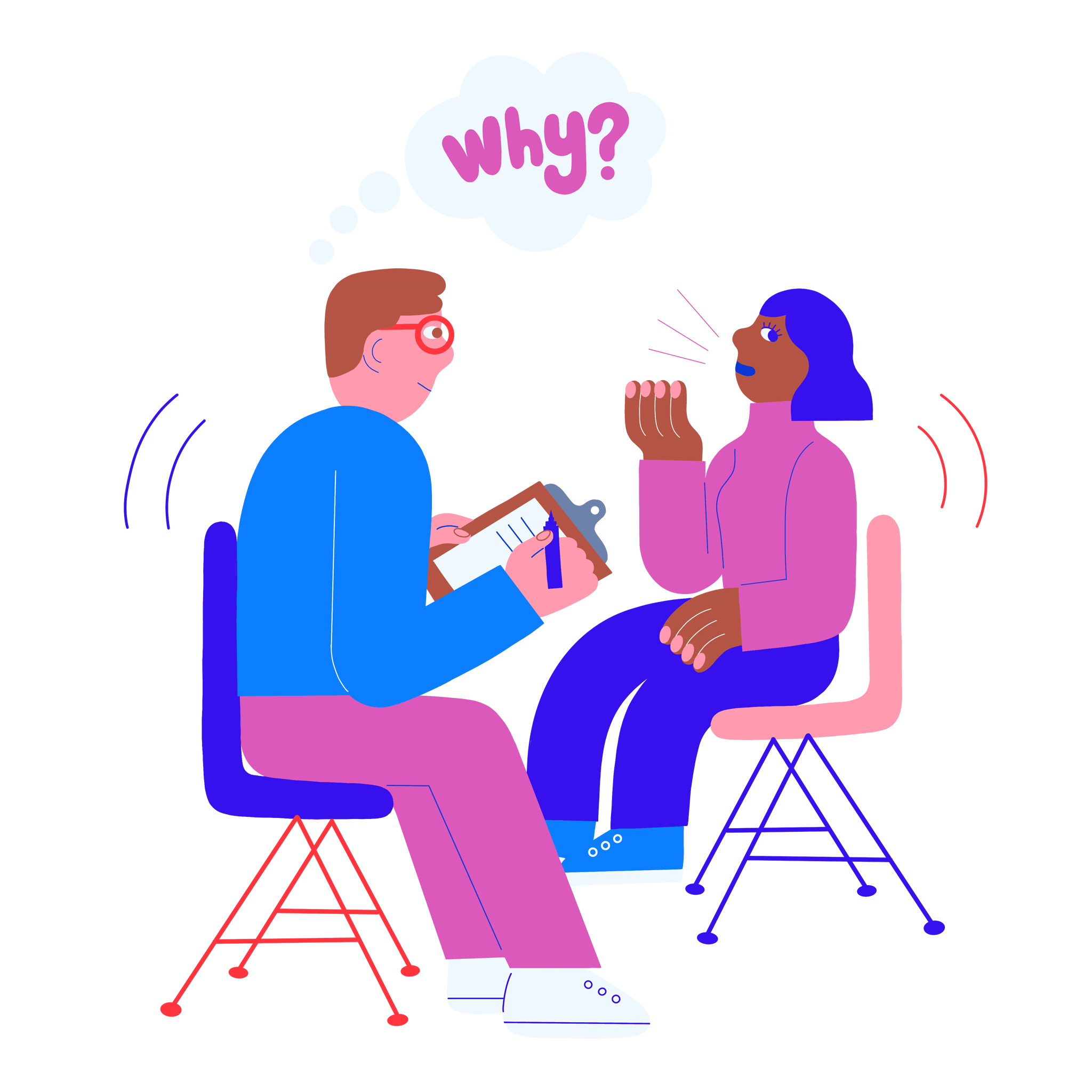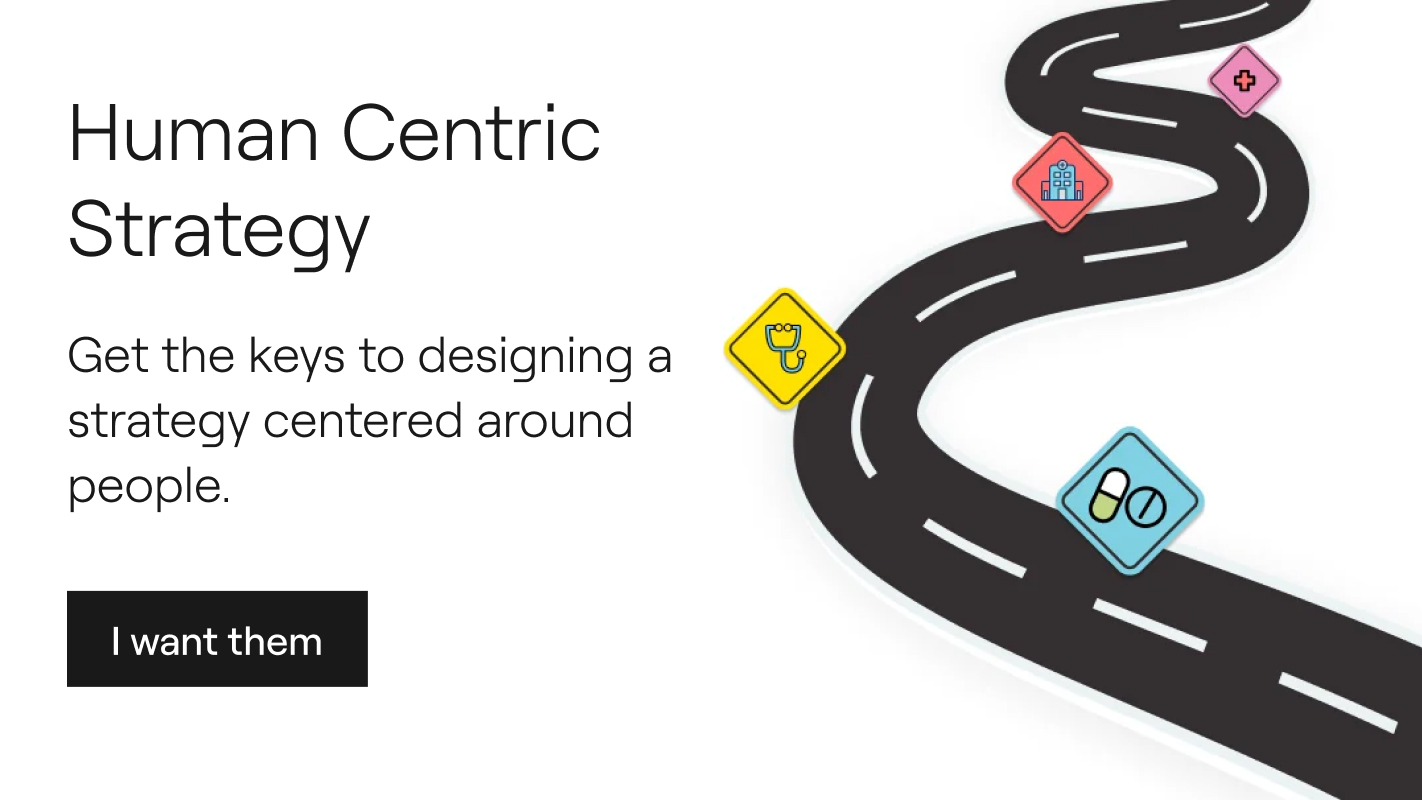Depth Interviews to Connect with Your Clients
Engaging in confident conversations and feeling heard always brings comfort. If we manage to make our clients or users experience this feeling when they engage with us, they can provide us with valuable information. That's why in-depth interviews are the main technique in qualitative research studies.
The methodological approach described in this article is based on research standards adapted to the needs and reality of Runroom.
Through in-depth interviews, we can gather valuable insights to implement improvement and transformation solutions with a human-centric approach. Additionally, there are other interesting techniques that complement them, which we can apply if the case requires it: ethnographies, immersions, journals, group sessions, and more.
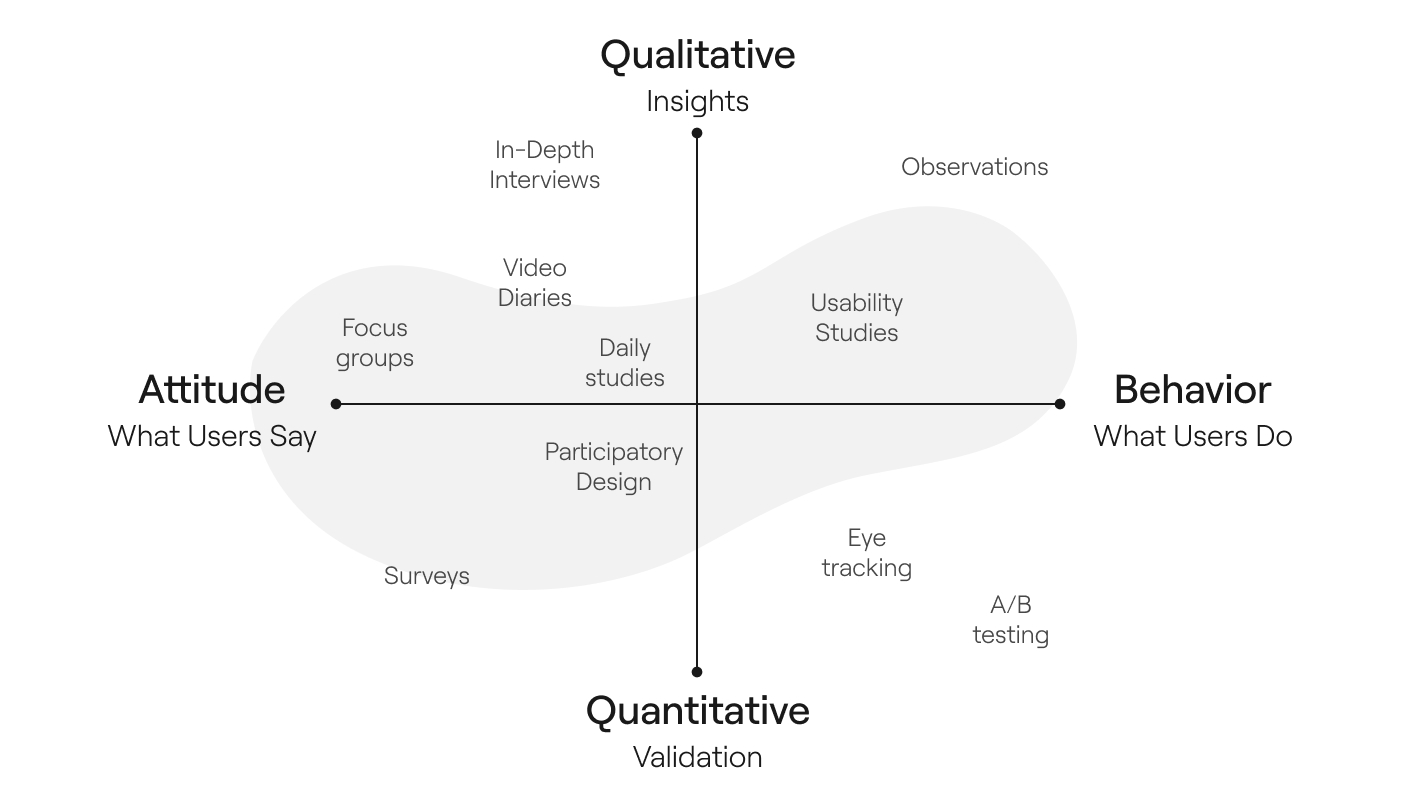
To understand the utility and ensure the success of in-depth interviews, it works especially well to place them within the double diamond that describes the Design Thinking process.
We trust this model as a foundation for a people-centered innovation process because it facilitates understanding and perspective throughout the entire process. We position interviews within the Discovery phase, the stage suitable for expanding and acquiring information about a previously defined problem. However, we can also use them in the Experimentation phase when validating solutions.
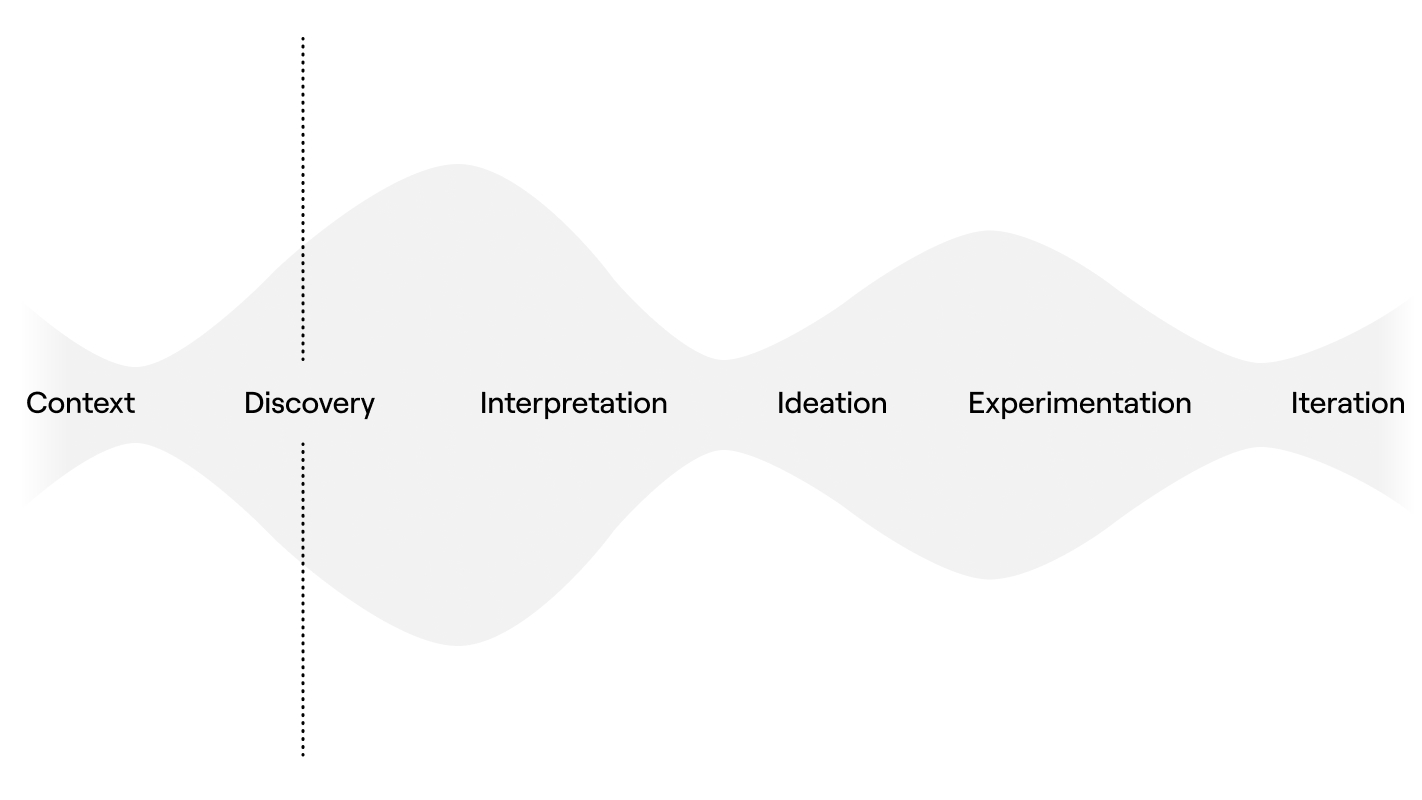
What we aim to achieve with in-depth interviews is to understand the underlying reasons behind the behavior and conduct of the people focused on in the study.
The format of casual and relaxed conversation allows us to connect with the interviewee and inquire not only about what they do but also how and why they do it, what they are looking for, what sensation or feeling they experience in a particular experience... Ultimately, what their deep perspective on the matter is.
Key Points Ensuring Success in the Technique of In-Depth Interviews
-
Objective
-
Initial Hypotheses
-
Selection Criteria
-
Next Steps in the Process
-
Human Centricity
It is crucial to consider these points because excellent interviews can be conducted, but if we forget the context and purpose, we won't extract all possible value.
Objective
The objective is what gives meaning to the study and must be well-defined from the phase prior to Discovery. It should be outlined and agreed upon in the Context phase. It is essential that it be an "agreement" resulting from the alignment of the different actors involved in the project, especially the final decision-makers. It is even valuable to involve possible dissenters.
If the study is based on a misguided objective, the dedicated efforts are likely to lose meaning as the project progresses.
A specific objective will economize the study and streamline the extraction of conclusions. When we have the opportunity to launch such a study, it is common to want to include many topics in it. However, it is preferable to launch several specific studies for each theme/objective rather than trying to cover more topics, as there is a risk of extending and overloading the process and making decision-making more complex.
Tip: Emphasize having an alignment session with all involved in the project and the research team. Even if you have hired the team for a specific objective, when details are discussed as a group, there are always nuances and unexpected turns that can affect the focus of interviews and future strategic decisions. Those who participate in these sessions will grasp the essence and be on the same page.
Initial Hypotheses
Initial hypotheses are the ideas and assumptions made in advance regarding the subject. To fine-tune the focus in interviews, it is crucial to discuss them with different stakeholders and generate conversations that clarify the scope of observation. These hypotheses define the starting point; you must ensure that they will be taken into account and will be sought to be contrasted in the study. Clarifying them will help determine future decisions.
Tip: Make sure the research team listens to the preconceived ideas or theories you have regarding the subject. This way, they will keep them in mind during the study. And remember, it is more fruitful to try to "challenge the hypotheses." If they need validation, they will validate themselves. Oh, and encourage the team to explore in a semi-structured way to discover "what we don't know we don't know."
Selection Criteria
When preparing a customer experience study, special attention must be given to selection criteria. It is vital to inform the research team about the facets that are decisive in defining our end customers. They don't necessarily have to be the classic sociodemographic criteria, but if there's any essential one, it should be clarified early on. Selection criteria are closely related to the study's objective; your general target may not distinguish by age range, but you might currently be considering a specific initiative with the elderly. An important axis of classification, and therefore selection, is people's motivations.
Tip: Review your objective with the entire team. Discuss not only those unequivocal criteria but also extreme perspectives that can provide a broad range of insights. For example, in the case of the elderly, it might be beneficial to include some dependent individuals, others in the fourth age who care for their elders, or some younger individuals who are approaching this life stage.
Next Steps in the Process
It may seem obvious, but the Discovery process is long and profound, making it easy to forget to throw the buoy that will allow us to resurface without losing the location of the ship. Depending on the set objective, the conclusions of the Discovery phase will be in one format or another. Thus, to close the first diamond of the Design Thinking framework, we have the Interpretation phase.
We will approach it differently depending on whether we want to improve a service later, quantify our market by profile, find opportunities for transformation, etc. Each case involves different deliverables: a Buyer Persona profile, a Customer Journey Map, a Service Blueprint, a list of opportunities or challenges, and more.
This also needs to be considered from the beginning of the project because it will help guide the interviews and define a framework for effort in the synthesis exercise. This excerpt that the research team prepares for us must be useful; it has to be right for what we are planning. While we must be flexible and adaptable, as the Discovery phase sometimes surprises us and demands a specific format.
Tip: Ensure that the entire team involved is clear about the territory you want to navigate based on the study, and at the same time, remember to be flexible and opportunistic if the discovery presents an unexpected territory. Here lies the beauty of stepping out of our minds and into those of our clients :)
Human Centricity
If the objective is what gives meaning to the study, a people-centered perspective (your clients/patients/users) is what ensures the success of your future actions. We start with a business idea and end up impacting people's experiences. That impact is in our hands, and we must be consistent with it once we embark on the journey. The business objective and the needs of our clients can find that common ground. Hence the importance of concluding challenges based on the reality of our clients' Point of View (POV). That's why we mentioned that our initial hypotheses should be approached with the idea of being discarded. This will make it easier for us to achieve objectivity in listening to our clients and conclude the study with a high level of empathy towards them and their experience.
Tip: When looking for a research team, look for one capable of understanding you to fulfill the outlined keys (business, hypotheses, criteria, and next steps). But also ensure that this research team is not complacent with you, but a staunch advocate for the voice of the customer, capable of listening objectively, regardless of whether you like what they say or not. That's why you hire them ;)
Our Approach
As customer experience consultants at Runroom, we ensure a high and precise definition of all these key points whenever we undertake a study of this nature. The keys to achieving this are three:
- Assertiveness: We always generate conversation and won't hesitate to break a brief if necessary. We don't settle for the given context because experience has shown us that debates with the entire team enrich and clarify the framework.
- Facilitation: We always help kickstart the machinery of the train we'll be traveling together. We have experts in facilitating collaborative sessions and co-creation to enhance not only creativity but also analysis and definition. Additionally, we involve the research team from the very beginning to ensure a connection with the challenge and the client is established.
- Strategy: We always remind you that the key to success is a customer-centric approach. You'll see in us the passion to convey the voice of the customer objectively and humanely, making it easy for you and your team to connect and empathize with them.
Listening and Understanding Before Acting
Perhaps you're thinking about improving the efficiency of a service. Maybe you're looking for ways to grow your business. Perhaps attracting new customers is of interest to you. Maybe you want to increase the conversion rate of your websites... Whatever your goal, before taking action, the first step is always to listen and understand the why behind your customers or users.
